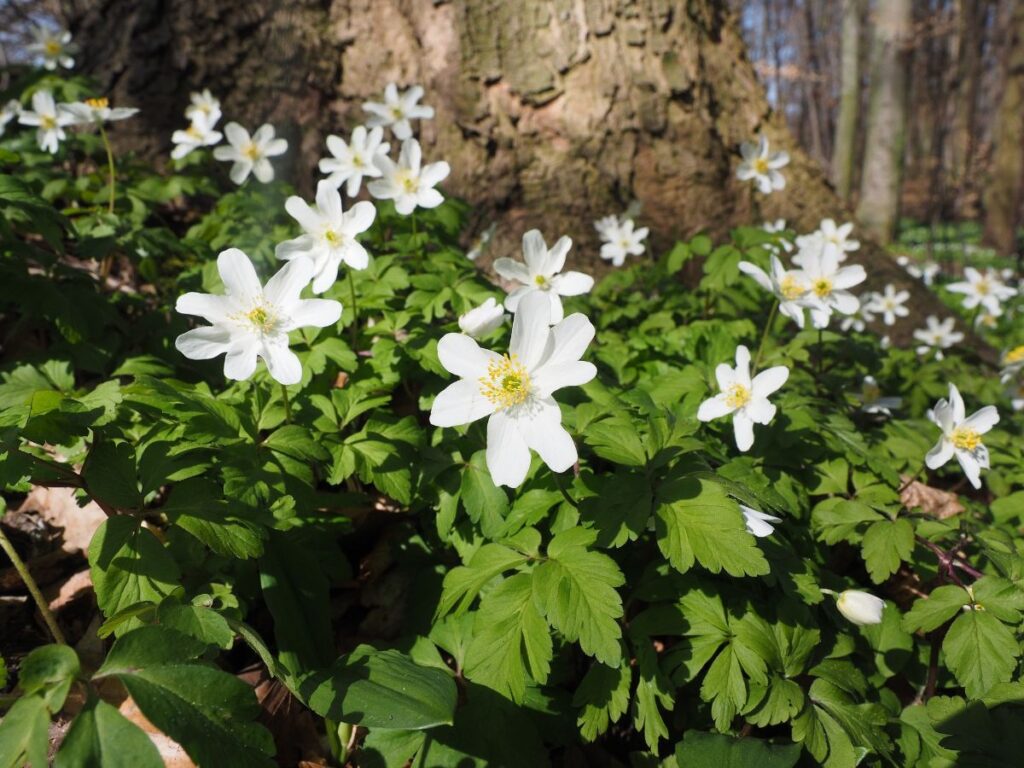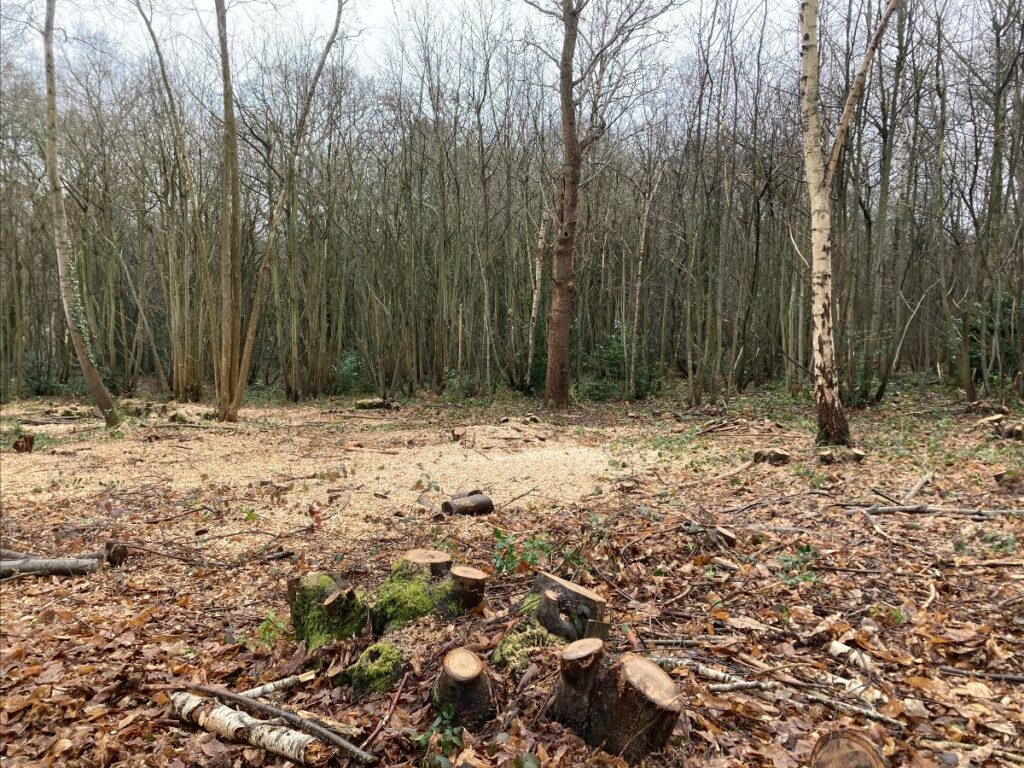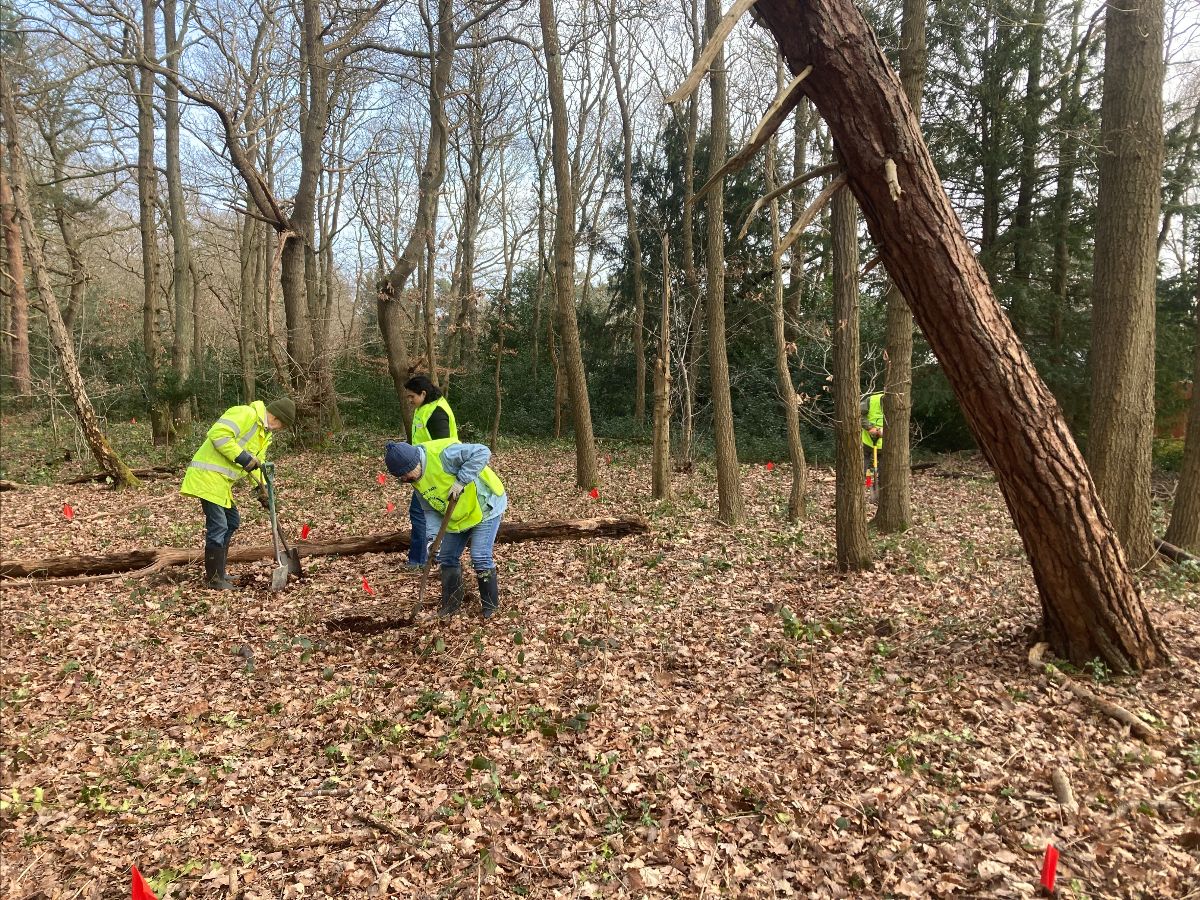February conservation highlights
During February, contractors felled a small area of chestnut coppice at Spring Park, which will bring the trees into the sixteen-year coppice cycle. Coppicing revives the chestnuts making them more resilient to pests and diseases, and less likely to blow over in high winds.
Another job in February was to cut another section of blackthorn in the Spring Park meadow with a Seppi mower (a very useful tractor-mounted tool with tough flails that can cut thicker vegetation than a conventional mower). Whilst this might look severe at first glance, the purpose of doing this is to stimulate fresh blackthorn to grow and create the ideal habitat and conditions for the brown hairstreak butterfly. The butterfly breeds on the young growth of blackthorn so we cut a different section each year to ensure there is a continual supply of their preferred food plant at the right age!

Springing into life: wildlife to watch out for
While the woods at Spring Park are a pleasure to visit all year round, the jewel in the crown has got to be spring! Flowers bloom, bringing bursts of colour, and wildlife reawakens, turning the woodland into a hive of activity. On the woodland floor you can expect to see a riot of colour with wildflowers such as primrose, lesser celandine, wood anemone, and bluebells. Most of these species are indicators of ancient woodland; wood anemones for example spread through roots rather than seed so have a strong association with old and relatively undisturbed woodland.
Turning to the pond, we’ll be seeing the return of breeding toads and frogs looking to mate and lay frogspawn as the weather warms. The jelly-like eggs are connected in clumps and produced in hundreds; laying many eggs means more tadpoles will hatch and it will be more likely that some will survive – it’s a tough life for amphibians! It is thought that only 1 in 50 eggs makes it to become a froglet without being eaten.

Hazel planting boosts biodiversity on West Wickham Common
We are hugely grateful to the local Rotary club who kindly donated and planted an abundance of hazel ‘whips’ on West Wickham Common. This significant contribution will aid in diversifying the woodland understory, complementing existing flora such as rowan and cherry trees. In recent years, our conservation efforts have focused on removing dense holly growth that has overshadowed the understory, offering limited wildlife value.
The introduction of hazel brings multifaceted benefits for wildlife. Hazel leaves serve as vital food sources for the caterpillars of various moth species, including the large emerald, small white wave, barred umber, and nut-tree tussock. Additionally, the hazelnuts produced are eagerly consumed by a diverse array of birds and small mammals, enriching the biodiversity of our cherished habitat.

Volunteering
We are still welcoming new volunteers and looking at growing our volunteer group. If you are interested in joining or want to know more about what volunteers do on Spring Park and West Wickham Common, please email us and come along to find out more!
Friday 29 March 10am-2pm
